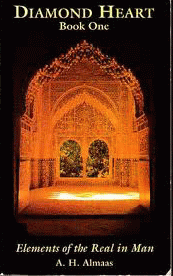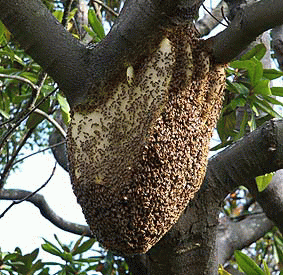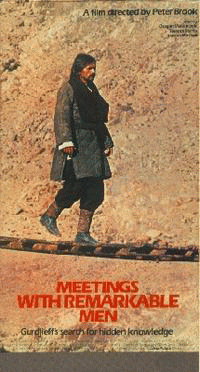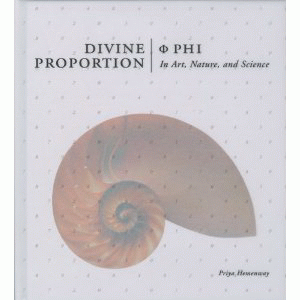Beezone Note:
George Gurdjieff first mentioned the Sarmoung Brotherhood in his semi-autobiographical work, Meetings with Remarkable Men, published in 1963. In the book, Gurdjieff describes his travels in search of ancient wisdom and mentions his quest to find this mysterious esoteric group, which he claims is based in Asia, possibly in Afghanistan. He suggests that the Sarmoung Brotherhood possesses ancient knowledge, particularly related to spiritual and psychological development, and he presents them as part of a lineage of wisdom-keepers.
In Meetings with Remarkable Men, Gurdjieff provides accounts of his encounters with various teachers and schools, using the Sarmoung Brotherhood as a symbol of hidden knowledge preserved through centuries. However, the existence of the Sarmoung Brotherhood remains unverified outside of Gurdjieff’s writings, and many scholars believe it may be an allegorical or fictional representation rather than a historical group.
Gurdjieff’s narrative suggests that he viewed the Sarmoung Brotherhood as carriers of esoteric teachings linked to ancient traditions, potentially with Sufi influences, emphasizing inner transformation and self-knowledge.

Gathering Honey

There was a secret Work school that existed in Afghanistan for thousands of years called “Sarmoun Darq,” which means “The Beehive” or the “Collectors of Honey.” The purpose of this beehive was to collect human knowledge during the times when knowledge was dissipating and store it for future times when it could be used again. Most often undertaken in times of difficulty on earth, times of turmoil or war, this activity is so profound that most people cannot even conceive of what is involved and what significance it has.
When we say the Sarmoun Darq stores human knowledge, we do not mean information. Information can be collected in books. There, is no need to form a school or a secret society to store information. Unlike information, this knowledge is material in the way that honey is material. The knowledge is actually collected in the same way that bees collect nectar from flowers and change it into honey. This is why the school is called The Beehive; its function is to collect all kinds of nectars – aspects of essential knowledge. The members have the capacity to concentrate it and change all the aromatic, beautiful nectars into very thick, sweet honey which they can then store in special flasks. When the right time comes, the flasks are opened and the knowledge is given out according to what is needed.
The nectars are the different aspects of knowledge about Essence, and the honey is the distilled pure knowledge of Essence. The image of the bees and the honey and the hive and the nectar is the closest description of the actual reality of the school. It is the closest description of the actual reality because knowledge of Essence is material that can be collected, concentrated, and distilled. This becomes obvious when we understand that Essence actually exists just as honey exists, just as nectars exist. The real knowledge about Essence is Essence itself. Essence is itself the knowledge.
This school, the Sarmoun Darq, collects the human Essence during difficult times on earth and stores it in special flasks. These special flasks are actually carefully prepared human beings. In this way, knowledge is preserved and passed on to other flasks until it is needed. Then these flasks, these human containers, are sent to different places to give out a particular material, material of whatever density or profundity can be absorbed.
If you look at any Work system, Work group, or Work school from the deepest, most direct, most obvious, most phenomenological point of view, you see their work is simply collecting, distilling, and purifying human Essence so that it becomes as concentrated as possible in the human individual. This is done by whatever techniques the group or school has at that time. They use in this activity whatever method they have at their disposal. Like bees changing pollen to honey, the members collect nectars and transform them into human Essence for themselves and for everybody else. The particular activity depends on the person in charge of the school who prescribes the method which the members of the group use, each person according to her own capacity. Often, most of the people don’t even know exactly what they are doing. They only know the activity; they do not know all that it can accomplish. In time, as we have seen in the work we do here, people begin to understand more and more what it is they are actually doing.
At the beginning, people will see that they are looking at their emotions. They’re sensing, looking, and listening, observing their reactions, understanding their patterns. After doing that for a while, they start seeing the connections between these emotions and the loss of various aspects of their essence. As that loss is felt, Essence is present more and more in the person.
In the work we do here, everybody works individually most of the time, either in private sessions or within a group context. Everyone is doing his share of collecting the nectars, of whatever quality and density he can collect. Then it is necessary for everybody to get together and engage in a certain activity that, at its deepest level, is the gathering of these nectars in one place, so that by a certain process, the nectar can be purified and distilled, made as concentrated as possible. This is the product of the work of the weekend. Specifically, it is the function of the Sunday afternoon work period. It is not just the end of the weekend; it is a time when all the work that has been done since our last meeting is present in one place. Its intensity has developed over the weekend, and everybody has done his or her part. Then we all get together and do certain things so that what has been collected can jell. Essence is then present in ways that are much more palpable, much more defined. Each weekend brings out a different quality. And each aspect of Essence becomes clearer, more palpable, more purified, more concentrated. In this way, everybody can taste what it is like.
That is the most profound level of the work. The particular activity that we do here on Sunday afternoons is to practice being fully present, as fully present as we can be, while we engage in physical activities such as gardening, painting, and so forth. You sense, look, and listen with whatever essential capacity you have, in whatever activity or task you are doing. This activity both facilitates the function I’ve just described and enables you to practice being present in an atmosphere and place where this is encouraged. The presence of many people engaged in the same task adds energy. This energy is not just additive. The presence of Essence is contagious, and since everybody is sensing, looking, and listening intensely while they are working on the tasks, it is possible to create a certain amount of honey in more concentrated form than is possible at other times. So sensing, looking, and listening will give each person an added capacity to be present and will help each person taste the honey. Each of you can then take this taste of Essence and the capacity to be present back into your life. In time, you can take it into your life more and more so that your life increasingly becomes the essential life.
These methods are scientific. When you do them, you achieve precise results. If they are not followed, something else results. It is much easier for many bees to make honey than for just one bee to attempt it. One bee by itself won’t make honey. It will die very quickly. You never see a bee with its own hive making honey. This example of the ancient school of the Sarmoun Darq illustrates the kind of thing that we are doing here.
From DIAMOND HEART BOOK ONE: ELEMENTS OF THE REAL IN MAN by A.H. Almaas. © 1987 by A-Hameed Ali.
Reprinted by arrangement with Shambhala Publications, Inc. www.shambhala.com
At the apogee of the Sumerian civilization, Bennett continues, the Sufis are believed to have founded a brotherhood called the Sarman or Sarmoun Society, which, according to Gurdjieff, met in Babylon as far back as c. 2500 BCE and was responsible for preserving the inner teachings and initiations of the Aryan tradition in a period of religious decline. Sarmoun is a word meaning bee in Old Persian, and refers symbolically to the practice of the brotherhood of storing the “honey” of both the traditional wisdom and the supernatural energy or baraka enabling it to be understood, and sending this double “nectar” out into the world in times of great need. The word Sarmoun can also mean “those who are enlightened.” The Sarmouni are believed to have secret training centres hidden to this day in the most remote regions of Central Asia.
In Gurdjieff: Making a New World, Bennett conjectures that around 500 BCE the Sarmoun Society migrated from ancient Chaldaea to Mosul in Mesopotamia, moving north into the upper valley of the Tigris, into the mountains of Kurdistan and the Caucasus. There it became active in the rise of Zoroastrianism under the Persian monarch Cambyses I. According to Gurdjieff, the Society later moved eastward to Central Asia, twenty days’ journey from Kabul and twelve days’ journey from Bokhara. “He [Gurdjieff] refers,” says Bennett, “to the valleys of the Pyandje and the Syr Darya, which suggest an area in the mountains south-east of Tashkent.” Although Gurdjieff was never explicit about his relationship to the Sarmouni or the precise locality of the monasteries in which he trained towards the end of his travels, he provides many hints in such autobiographical writings as Meetings With Remarkable Men that this Sarmoun brotherhood, whose monasteries were situated on the northern slopes of the Himalayas, was the custodian of the most ancient wisdom known and the primary source of his extraordinary esoteric knowledge and powers.
Gurdjieff came to the West as a man with a mission. He had journeyed extensively in the Caucasus, where it is thought he first entered the tekkes of the Yesevi dervishes of Sheikh Adi in the Kurdish foothills and later those of the Sarmouni in Afghanistan, receiving a number of initiations by the remarkable age of twenty two. Those closest to him maintain that he remained in touch with hidden Sufi sources throughout his life and received help and support from them. He clearly believed that he acted on their authority in setting up schools in the West that transmitted the cosmological and psychological teachings he himself had learned during his travels. Yet while freely recounting his many Central Asian adventures in his search for wisdom, Gurdjieff managed to draw a permanent veil of secrecy and ambiguity over all details of these intimate encounters with the dervish tradition. This of course is in line with the extreme reticence of the Sufi orders themselves.
 The Sarmouni as depicted in the film “Meetings with Remarkable Men.”
The Sarmouni as depicted in the film “Meetings with Remarkable Men.”
“True knowledge, it is asserted, exists as a positive commodity, like the honey of the bee. Like honey, it can be accumulated. From time to time in human history, however, it lies unused and starts to leak away. On those occasions the Sarmouni and their associates all over the world collect it and store it in a special receptacle. Then, when the time is ripe, they release it into the world again, through specially trained emissaries.”
The reason for this school—and there have been and still are many such schools—is to gather and preserve certain kinds of knowledge regarding the human soul, particularly at times when such knowledge appears to be dissipating. This activity and its significance have a profound implication for our human evolution. Without it we cease to evolve.
Mystics and masters collect and store sacred knowledge and esoteric principles in much the same way as bees collect nectar, although they have the capacity to concentrate and change the nectars when they are gathered so that when the time comes and the containers are accessed, the knowledge that has been concealed will inform the deeply curious and be of value to seekers of truth. By bringing new meaning to old texts, or revising rituals and meditation techniques, great teachers create new bodies of work. Secrets of esoteric understanding are redesigned and couched in new forms. Methods are borrowed from one tradition and used to inform another. Legends are created and masterfully designed nuggets of wisdom are hidden within. As time passes, the truths that once were obvious become obscured. They are hidden, and they wait to be rediscovered.
There are wonderful fragments of sacred knowledge in myths and sacred rites, in sacred sounds, in sacred art and architecture, and there are profound messages in the holy scriptures from every culture that have been handed down through the ages.
–from Divine Proportion: PHI in Art, Nature, and Science, by Priya Hemenway

Account of the Sarmoun Brotherhood
Desmond R. Martin © 1965
Not so long ago I found myself walking through a mulberry grove in what might have been an English garden — if one did not look upwards to the frowning crags of the Hindu Kush, or at the robes of the monks of the Sarmoun community.
Established here in North Afghanistan for many centuries, the brotherhood (and the sisterhood with which it is affiliated) maintain this settlement as a sort of country retreat, where aspirants are trained in the ancient arts of service and self-discipline characteristic of the cult. Elderly monks and lay members, perhaps from as far afield as Tunisa or Armenia, make their last pilgrimage here, to the Shrine of Musa the Patient, the pilgrimage of retirement.
The Sarmouni (the name means ‘The Bees’) have often been accused of being Christians in disguise, Buddhists, Moslem sectarians, or of harbouring even more ancient beliefs, derived, some say, from Babylonia. Others claim that their teaching has survived the Flood; but which flood I cannot say.
Like their namesakes, however, members of the order are not argumentative, being concerned only in discharging the terms of their motto: ‘Work produces a Sweet Essence’ (Amal misazad yak zaati shirin).
With only one break — at the time of Gengiz Khan’s irruption across the Amu Daria to the north, when he destroyed Balkh, the ‘Mother of Cities’ not far away — they seem to have lived here for so long that no records remain of their origins.
Theirs is a good life, as much of it as I was allowed to see. Many of the devotional exercises, such at the communal ‘Zikr,’ or Remembering, are held in private. The Brethren, numbering no less than nine hundred, mainly lived in the hill-settlements called’Tekkies,’ artistically sited oratories surrounded by vines and patches of herbs.
Each monk is specialist of some sort: in gardening, local medicine, herbs, mathematics as known to them, calligraphy or even falconry. One of the planes they grew most carefully was Chungari (Herb of Enlightenment); this I was not able to see, nor could I obtain a sample of it. According to Afghan folklore it has powers connected with mystical revelation.
Within the monastery walls numerous industries are carried on. Working with felt, pelts, wool and looms, the inhabitants produce articles of surpassing beauty and durability. Some of the carpets today called Bokhara actually originate there. The Abbot, Baba Amyn, allowed me to stay in a wood-lined cell, and talked to me in Hindustani, which he had learned during three years spent in India as the servant of a Prince: a part of his training, as he said.
I was issued with a bowl, a sheepskin run, horn, belt and cap, the standard dervish equipment, though I had little idea as to their significance or uses.
One evening I was allowed to inspect some of the treasures of the community, and was assured that they had not before been seen by any non-initiate. They had been declared ‘deconsecrated,’ as it were, because a new phase of teaching, somewhere to the westward, had superseded the ritual to which they belonged. Henceforth they would merely be museum pieces.
An articulated tree, of gold and other metals, which seemed to me unbelievably beautiful and resembled a Babylonian work of art which I had seen in Bagdad Museum, was by far the most impressive. It served to indicate the postures assumed by dervishes in their Yoga-like exercises, which, performed to special music, they studied for self-development. A tall pillar of lapis lazuli, about nine feet high by two feet in diameter, was used for the Daur, a turning movement, in which the devotees circle round, one hand on the pillar, to achieve a particular state of mind.
On a wall faced with white Afghan marble, delineated in polished rubies glowed the symbol of the community. This is the mystical ‘No-Koonja,’ the ninefore Naqsch or ‘Impress,’ an emblem which I was later to see in various forms embroidered on clothes. This figure ‘reaches for the innermost secret of man,’ I was informed.
Its operation could only be manifest, at the right time and under special conditions, by the Lord of Time, the head of the community. He, unfortunately, was absent. In any case he did not reside at this monastery, but at another very secret place called Aubshaur. He is referred to, with great deference, as a sort of human incarnation of all teachers. He is the Surkaur, or ‘Workleader.’
Since the marble, rubies, and lapis are all mined in Afghanistan, and many of the miners and prospectors are adherents of the Sarmouni, this extraordinary richness of endowment was perhaps not as strange as it seemed to me at the time.
There are many legends about Sarmoun-Dargauh (‘Court of the Bees’), and one of them is this. True knowledge, it is asserted, exists as a positive commodity, like the honey of the bee. Like honey, it can be accumulated. From time to time in human history, however, it lies unused and starts to leak away. On those occasions the Sarmouni and their associates all over the world collect it and store it in a special receptacle. Then, when the time is ripe, they release it into the world again, through specially trained emissaries.
It is not only in the West, I though, as the greybearded chief of the story-tellers told me this, that legends about a secret knowledge linger on. He was not very forthcoming when I started to ply him with questions trying to see how far their doctrine had developed.
Were there any such emissaries in Europe? There was one, but he must not speak of him. But surely it would help everyone if he was publicly known? On the contrary, I was informed, it might be a calamity. He had to ‘work like a bee, in private.’ Could a visitor like myself have some of the ‘honey’? No, myself least of all, strangely enough; because I had seen and heard so much, I could have no more.
“Have you not seen that you are not allowed to take photographs, even, though other foreigners have been allowed to take them?” I had seen the treasures, that was the most that anyone could have.
Another evening, I watched the enactment of the beautiful Ceremony of the Key. As the sun was setting, several dozen of us assembled, under the direction of the ‘Master of Presentations,’ who was resplendent in a patchwork robe, intricately embroidered. In the light of the dying sun a dervish with crossed arms, hands on shoulders, knelt before the Abbot, deputising for the Surkaur.
Upon being handed a large key, he advanced towards a carved door that was set in a big square wooden structure, a piece of scenery, decorated with flags and maces and other emblems of power and authority. He put the key into an ornate lock and turned it. Suddenly, by means of a clever piece of engineering, the whole structure slid apart. The seen was lit by a procession of men carrying candles and intoning the Saidd dirge in honour of the teachers.
Then we saw that the pieces of the box were turning on pivots and rearranging themselves into different shapes; the scene was completely transformed. Gardens, orchards, birds in flight, and other motifs, made from wood and painted cloth, now replaced the rectangular structure.
The meaning of the drama was explained to me. It was an allegory, based on the idea that all teaching is transformed by mankind into something unnatural, institutionalized, like the box. “The Key of the Real Man opens up the real joy and meaning of life.”
First publication of the above article: Major Desmond R. Martin, The Editor of The Lady, “Below the Hindu Kush,” The Lady, vol. CLX11, No. 4210, December 9, 1965, p. 870.
Reprinted in Documents on Contemporary Dervish Communities: A Symposium, Collected, edited, and arranged by Roy Weaver Davidson (London: The Octagon Press, 1966), pp. 22–24.
Glossary
Terms from the Glossary of the booklet which appear in the article:
Aabshar, Aubshaur: Persian, ‘Waterfall.’
Chungari: ‘Herb of enlightenment,’ literally ‘Howness.’ An aromatic but non-narcotic herb consumed by dervishes at special times.
Darga (Dargauh &c): Court
Daur (Turkish usage = Devr); from Arabic: ‘Turn,’ a movement made by dervishes. One form of it is in the whirling of Maulavi dervishes.
Dervish: Persian, ‘one who waits at the door.’
Nu-Kunja (No-koonja, &c): ‘Nine-sided: Enneagon.’
Naqsch (Naqsh): Impress, diagram, design.
Sarkar: Persian, ‘Work-Chief.’
Sarmoun(i): Community named after the bees.
Surkaur: see Sarkar.
Tekkie, Takia, Takiy (&c.): Dervish centre, generally a building, sometimes with special characteristics in its building or arrangement inside.
Zikr (zikker, dhikr &c): A litany. Lit. ‘Repetiton.’